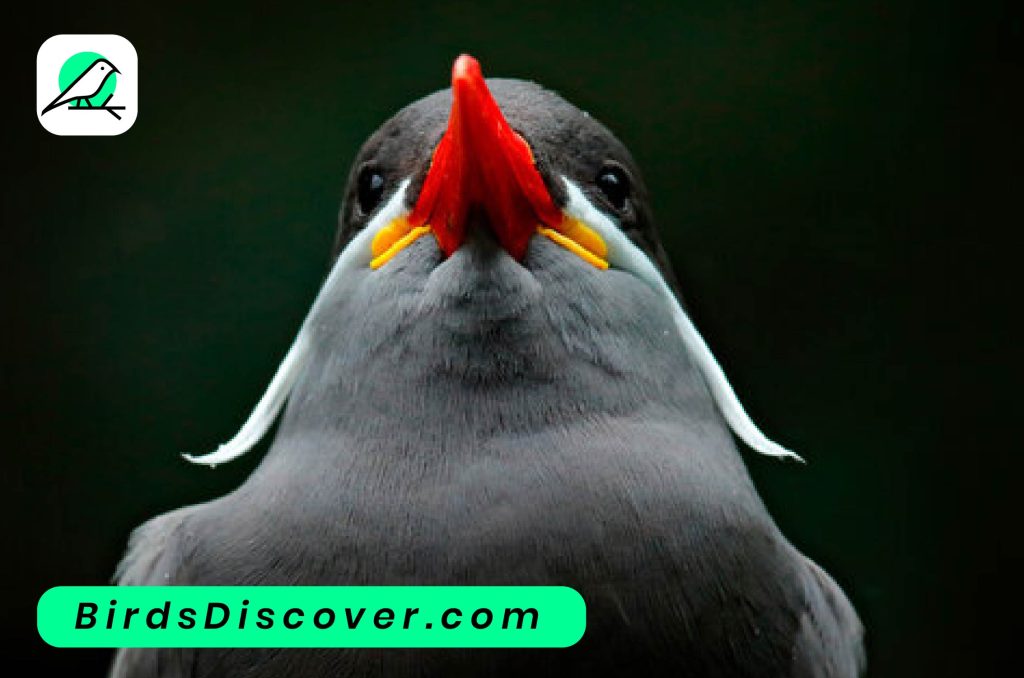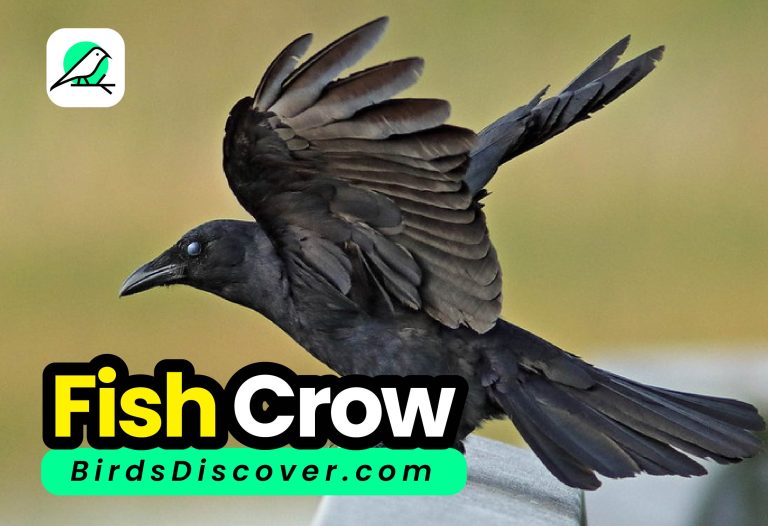INCA TERN [Larosterna inca]: Unveiling Its Habits, Habitat, and More

INCA TERN [Larosterna inca]: Unveiling Its Habits, Habitat, and More
INCA TERN
The Inca tern (Larosterna inca) is a charismatic seabird native to the Pacific coast of South America, particularly found along the western shores from northern Peru to central Chile. Known for its striking appearance, it features dark gray plumage, a prominent white moustache extending from the beak to the neck, and vibrant red-orange beak and feet. These terns are skilled flyers and agile divers, primarily feeding on small fish and crustaceans. They nest colonially on coastal cliffs, laying their eggs in rocky crevices or burrows. Inca terns are notable for their loud, raucous calls and are often admired for their beauty and grace in coastal ecosystems.
Scientific Classification
- Kingdom: Animalia (animals)
- Phylum: Chordata (vertebrates)
- Class: Aves (birds)
- Order: Charadriiformes (shorebirds and allies)
- Family: Sternidae (terns)
- Genus: Larosterna
- Species: Larosterna inca
Summary
The Inca tern (Larosterna inca) is a visually striking seabird native to the Pacific coast of South America, ranging from northern Peru to central Chile. Recognized for its unique appearance, it sports dark gray plumage contrasted with a distinctive white moustache that extends from its beak to its neck, complemented by striking red-orange beak and feet. Inca terns are adept hunters, feeding primarily on small fish and crustaceans by diving skillfully from the air. They nest in colonies along coastal cliffs, utilizing rocky crevices or burrows for shelter. Known for their vocal and social behavior, Inca terns contribute both beauty and ecological significance to their coastal habitats, embodying a blend of elegance and adaptability in their natural environment.

How Look like?Description Inca tern
The Inca Tern (Larosterna inca) is a captivating seabird distinguished by its striking appearance. During the breeding season, it displays a remarkable face adorned with a tuft of white feathers that sweep back from the base of its bill to form a distinct mustache-like crest. This white crest sharply contrasts against the bird’s dark grayish-black head and neck, creating a striking and memorable look. The body and wings are also predominantly grayish-black, with a glossy sheen on the wings. Its bill is slender and brightly colored in a vibrant red-orange hue, standing out prominently against its facial plumage. The eyes are dark and set within this contrasting white and dark color scheme. Outside of the breeding season, the Inca Tern’s facial plumage becomes less pronounced, but its distinctive bill color and general appearance remain characteristic. Agile in flight and often seen in large colonies along the Pacific coasts of South America, the Inca Tern is not only visually stunning but also a notable part of coastal ecosystems, adept at diving for fish as a significant part of its diet.
Distribution
- Habitat Range: The Inca tern is primarily found along the coastal regions of Peru and northern Chile.
- Geographical Extent: Its range extends from around Lima, Peru, southward to the southern parts of Chile.
- Preferred Habitats: It inhabits rocky cliffs and coastal islands, where it nests in colonies.
- Environmental Preferences: The Inca tern favors arid and semi-arid coastal environments, and is typically found near the shoreline.
- Occasional Movements: While primarily coastal, it may occasionally venture into estuarine and coastal waters in search of food.

Habitat
The Inca tern inhabits rocky coastal cliffs and offshore islands along the western coast of Peru and northern Chile. It prefers arid and semi-arid environments with little vegetation, where it nests in crevices and sheltered areas on cliffs. This tern is often found near the shoreline, benefiting from the abundant marine resources in these areas. During the breeding season, it forms large colonies on these rugged cliffs, while outside the breeding season, it can be seen foraging in nearby coastal waters.
Behavior
The Inca tern exhibits several distinctive behaviors, particularly related to its breeding and foraging:
- Colonial Nesting: Inca terns are known for their colonial nesting habits. They typically breed in large, noisy colonies on rocky cliffs and coastal islands. Their nests are often located in crevices or on ledges, providing protection from predators and harsh weather.
- Courtship Displays: During the breeding season, males perform elaborate courtship displays to attract females. These displays include calling, posturing, and presenting food.
- Social Interactions: Outside the breeding season, Inca terns are generally social birds, often seen in groups. They engage in cooperative behaviors, such as roosting together in large flocks and foraging in close proximity.
- Territoriality: While nesting, individual pairs are territorial and will defend their nesting sites aggressively from other terns.
Food
Diet: The Inca tern primarily feeds on small fish and invertebrates. Its diet includes a variety of marine organisms such as anchovies, sardines, and squid.
Foraging Technique: Inca terns forage by diving from the air into the water to catch fish. They are adept at catching prey near the surface and sometimes engage in cooperative feeding with other terns.
Feeding Habits: They often forage close to the shore and around upwelling zones where nutrient-rich waters attract fish. During the breeding season, they may travel farther from their nesting sites to find food.

Breeding
- Nesting Sites: Inca terns breed in large colonies on rocky cliffs and coastal islands. They prefer nesting in crevices, caves, or on ledges where they are sheltered from predators and harsh weather.
- Courtship: During the breeding season, males perform elaborate courtship displays to attract females. These displays include calling, presenting food, and engaging in synchronized flying and posturing.
- Nesting and Eggs: After mating, the female lays 1 to 2 eggs in a nest site. The eggs are incubated by both parents, typically for about 4 to 5 weeks.
- Chick Rearing: Once hatched, the chicks are fed a diet of regurgitated fish and invertebrates by both parents. They grow rapidly and are cared for in the nest until they are ready to fledge.
- Fledging: The chicks fledge, or leave the nest, approximately 6 to 7 weeks after hatching. They are capable of flight but may remain in the vicinity of the colony for a while as they learn to forage and become independent.
Vocalization
The Inca tern is known for its distinctive vocalizations, which play a crucial role in its social interactions and communication. Their calls are a series of loud, raucous, and somewhat harsh sounds that can be described as a “kek-kek-kek” or “arr-arr-arr” noise. These vocalizations are often used during the breeding season to communicate with mates, defend territory, and maintain colony cohesion. The calls can be quite frequent and noisy, especially in the bustling environment of a nesting colony. Additionally, their vocalizations help coordinate group activities, such as foraging and roosting.
Lifespan
- In the Wild: The Inca tern generally lives for about 10 to 15 years, with its lifespan influenced by factors such as predation, environmental conditions, and food availability.
- In Captivity: In controlled environments, where threats are minimized and resources are stable, the lifespan of an Inca tern can be somewhat longer, though specific data can vary.
Symbol of Health?
The Inca tern, like many bird species, can serve as an indicator of environmental health. A robust population of Inca terns often reflects a healthy marine ecosystem, as they rely on abundant fish and clean coastal habitats. Conversely, declines in their numbers can signal problems such as overfishing, pollution, or habitat degradation, which can impact the overall health of the marine environment. Therefore, monitoring the Inca tern can provide valuable insights into the state of coastal ecosystems and the effectiveness of conservation efforts.

Common Names in Different Languages
| Language | Common Name |
|---|---|
| English | Inca Tern |
| Spanish | Sterno Inca |
| French | Sterne d’Inca |
| German | Inkaterraube |
| Italian | Sterna Inca |
| Portuguese | Andorinha-de-inca |
| Dutch | Incaternt |
| Russian | Инка (Inka) |
| Japanese | インカアジサシ (Inka Ajisashi) |
| Chinese | 印加燕鸥 (Yìnjiā yàn’ōu) |
is friendly or combative?
The Inca tern is generally more combative than friendly, particularly during the breeding season. They are known for their territorial behavior and can be aggressive in defending their nesting sites from other terns and potential intruders. In large nesting colonies, their vocalizations and interactions can be quite noisy and assertive. While they are social birds and often seen in groups, their combative nature is primarily evident when protecting their breeding territory and resources.
Summary
The Inca Tern (Larosterna inca) is a striking seabird native to the coastal regions of Peru and northern Chile. It is renowned for its distinctive appearance and fascinating behaviors, which make it a subject of interest for ornithologists and bird enthusiasts alike. This summary delves into the Inca Tern’s habits, habitat, and other notable aspects of its life.
Physical Description
The Inca Tern is a medium-sized seabird distinguished by its dramatic plumage and striking features. Adults have a predominantly dark slate-gray body with contrasting white wing tips and a distinctive white line extending from the base of the bill to the eye. The bird’s most notable feature is its bright red bill, which is complemented by a pair of long, feathered, white plumes extending from its chin. These plumes give the bird a unique, elegant appearance. The legs and feet are also bright red, adding to its vivid coloration.
Habitat and Distribution
The Inca Tern primarily inhabits the rocky coastlines of Peru and northern Chile. It prefers arid, rocky shorelines and is often found nesting on cliffs and rocky outcrops near the ocean. Its habitat is closely tied to the presence of cold, nutrient-rich waters which support the fish and other marine life that constitute the tern’s diet.
During the breeding season, which typically spans from September to February, Inca Terns are highly colonial, nesting in large, dense colonies. These colonies are usually situated on steep cliffs or in crevices, offering protection from predators and easy access to the marine environment. Outside the breeding season, the birds may disperse along the coast and occasionally venture into nearby estuaries.
Diet and Feeding Behavior
The diet of the Inca Tern is predominantly composed of small fish, which they catch while foraging over the ocean. They are adept hunters, employing a variety of techniques to capture their prey. Their feeding strategy often involves diving into the water from the air or skimming the surface to snatch fish. Inca Terns are also known to follow schools of fish and take advantage of upwelling zones where prey is more abundant.
Breeding and Nesting
Inca Terns have a complex and fascinating breeding system. They are monogamous, typically forming long-term pair bonds. The breeding season is marked by elaborate courtship displays, including mutual preening and aerial acrobatics. Nests are constructed in crevices or on cliff ledges, often lined with guano and other materials. The female usually lays two eggs, which both parents take turns incubating. The incubation period lasts about 30 to 35 days, and once hatched, the chicks are altricial, meaning they are born helpless and require extensive care from both parents.
After hatching, the chicks are fed a diet of regurgitated fish and are cared for in the nest until they are ready to fledge, which typically occurs around 6 to 7 weeks of age. The parents continue to care for the fledglings for a few weeks post-fledging, teaching them essential survival skills.
Behavior and Social Structure
Inca Terns are highly social birds, particularly during the breeding season when they gather in large colonies. Their social behavior includes vocalizations and displays that facilitate communication and coordination within the colony. These terns are known for their noisy and active nature, which contributes to the lively atmosphere of their nesting sites.
Conservation Status
The Inca Tern is currently classified as a species of “Least Concern” by the International Union for Conservation of Nature (IUCN). However, like many seabirds, it faces potential threats from environmental changes and human activities. Factors such as habitat destruction, pollution, and climate change could impact its population and habitat. Conservation efforts focus on monitoring populations, protecting nesting sites, and mitigating potential threats to ensure the long-term survival of the species.
Research and Observations
Ongoing research on the Inca Tern includes studies on its breeding ecology, feeding behavior, and population dynamics. Observations of their behavior and habitat use provide valuable insights into the health of marine ecosystems and the impacts of environmental changes. Conservation programs and research initiatives aim to better understand these birds and promote their protection.
In summary, the Inca Tern (Larosterna inca) is a captivating seabird with distinctive plumage and intriguing behaviors. Its habitat along the rocky coasts of Peru and Chile, coupled with its dietary preferences and breeding practices, highlight its adaptation to a marine environment. While currently not considered endangered, the Inca Tern’s well-being is closely tied to the health of its coastal ecosystem, making continued research and conservation efforts essential for its preservation.
FAQS
Here are five frequently asked questions about the Inca tern, along with their answers:
- Where can I find Inca terns?
Inca terns are found along the coastal regions of Peru and northern Chile. They inhabit rocky cliffs and offshore islands, primarily in arid and semi-arid coastal environments. - What do Inca terns eat?
Inca terns primarily feed on small fish and invertebrates, such as anchovies, sardines, and squid. They forage by diving into the water from the air to catch their prey. - How do Inca terns communicate?
Inca terns use a series of loud, raucous calls, described as “kek-kek-kek” or “arr-arr-arr” sounds, to communicate. These vocalizations are important for maintaining colony cohesion and defending territory. - What is the breeding behavior of Inca terns?
Inca terns breed in large colonies on rocky cliffs and coastal islands. They lay 1 to 2 eggs in crevices or on ledges, and both parents share the responsibility of incubating the eggs and feeding the chicks. - How long do Inca terns live?
In the wild, Inca terns typically live around 10 to 15 years. Their lifespan can be somewhat extended in captivity due to reduced threats and stable resources.






